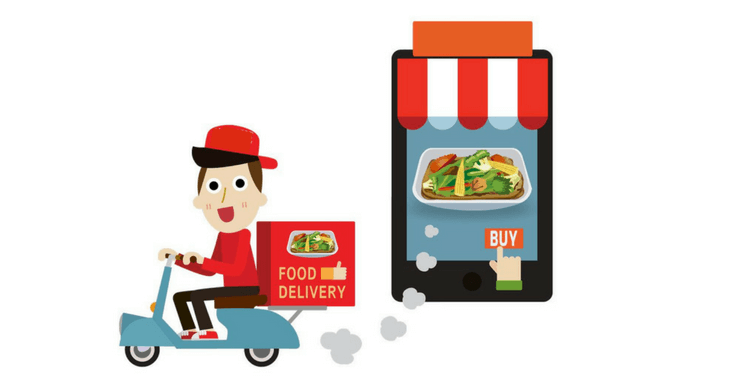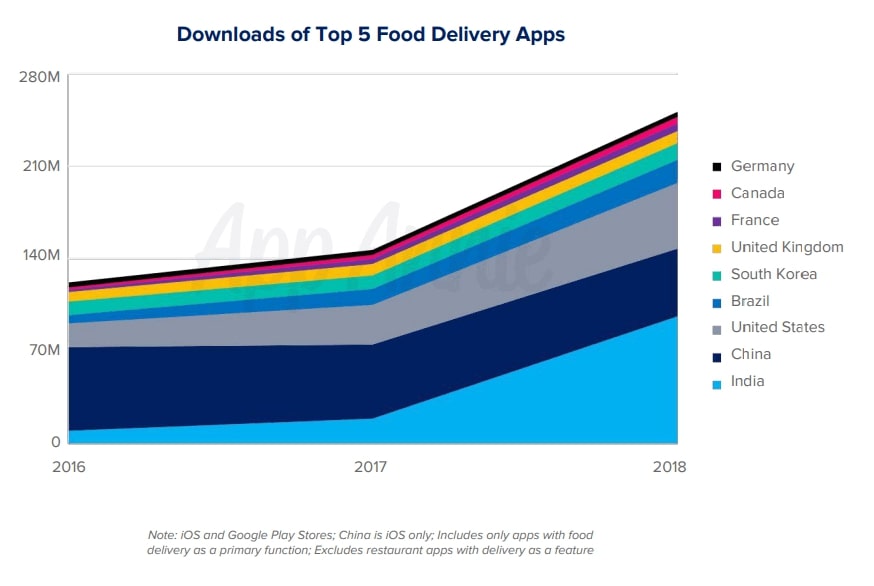
Online Food On-demand industry is valued at $107.44 billion in 2019, and it is expected to grow at 3.6% per year. With Millennials shifting their inclinations from conventional eat out to various on-demand food delivery services, it is clear that this industry is here to stay, and now everyone wants to start their own online food delivery business.
From a wide variety of restaurants, unlimited cuisines, and the option to pay at a single click, undoubtedly, on-demand means delivery apps have made lives less complicated. Food delivery apps more than convey convenience as a specific service characteristic; they bring comfort to each customer at every point.
Why customers prefer on-demand food delivery?
Let’s give dive in to see why customers love food on-demand industry, and what is in the future?
- Accessibility
- Convenience
- Speed
- Cost-efficient
- Offers and Promotions
- Simplicity
- Future of On-demand Delivery Service
- Challenges in Food On-demand service

Accessibility
On-demand food delivery applications let customers order food from numerous restaurants on their doorstep without trading off their work routine. The demand for online food delivery services is expanding because of the reason that clients incline toward convenience and accessibility. Millennials act as the most significant target segment to use web apps and online food delivery services. Customers are used to web-based business sites and expect a similar involvement with the on-demand food delivery services on the web. On-demand food delivery applications enable clients to look at the price, menu, and restaurant reviews by previous clients.
Convenience
The vital part of customers leaning toward on-demand food delivery services is the convenience they offer. Food delivery apps need to match the supply and demand in the best possible way. Customers expect on-time delivery of food, and to keep up a decent association with the client; food should be delivered without any delay. Delivery apps use route optimization and real-time tracking as an innovation module to match demand and supply.
The number of restaurants, the preferred mode of payment, real-time tracking, and continuous following all add to make the food delivery business appealing and convenient. On-demand food delivery application is developed helpfully with a plan to give clients the predominant adaptable experience. Also, it offers advantages to restaurant owners to oversee deliveries and communicating with clients to provide the best experience.
Speed
For the most part, on-demand food delivery services take around 30 minutes to execute the order. Real-time tracking, route optimization, task automation, scheduling, and delivery management modules upgrade the delivery process. Additionally, clients have the convenience of placing an order on a solitary swipe. The entire food delivery process is convenient for both clients and restaurant owners.
Cost-efficient
In an aggregator based food-delivery business model, employing a third-party delivery team is the best option. More often than not, on-demand food delivery business works with restaurants that manage food deliveries. To put it plainly, a business owner requires not to stress over transportation. Significantly more, the clients want to order food from on-demand food delivery services to spare transportation costs and time. But, if you have your own restaurant and see how to promote your restaurant, online delivery might be the best option for you.
Offers and Promotions
it turns out to be anything but difficult to catch the customer’s attention with offers and promotions. It is beneficial for customers and restaurants as restaurants get the number of orders by enticing customers with offers. Customers get off on order amount and cashback on placing an order. Cashback is a decent strategy to instigate clients to place more orders.
Simplicity
The on-demand food delivery industry is a competitive industry, with each contender offering something new consistently. In any case, the truth is that the consumers need everything on a click. That is the fundamental reason the food delivery applications has turned into the piece of our life.
Future of on-demand food delivery service
There has been a relentless increment in the number of individuals requesting food online owning convenience, effectiveness, and accessibility. Although the business is still in its improvement stage, evaluating $4.4B income by 2020. Yet, only 4% of food is delivered through on-demand food delivery services around the world. The on-demand food delivery business has demonstrated its growth and potential with all the food delivery business wanting to expand horizontally. This Netflix age loves food on-demand. See how can you create one.
Challenges in Food On-demand service
High operating costs and consumer demand are compacting the overall revenue. Another challenge is the high delivery agent turnover rate. Generally, the delivery agents are paid higher than the industry norms, and the agents deliver for 3-6 months. The utilization of proper technology can be a distinct advantage. The technology can cut down the delivery time and empower drivers to provide the number of orders regularly. Technology can cut down unnecessary operating costs without trading off with the food and service quality. To read in-depth about the challenges faced by the online food delivery industry, you can visit our blog.
Yelo is one of the best solutions for on-demand food delivery service providers to manage deliveries and enhance business productivity. Customize the platform as per the business prerequisites with highlights like native mobile app and website that comes with powerful analytical dashboard.
Click Here to see how much does it cost to build an on-demand food delivery business.

Subscribe to stay ahead with the latest updates and entrepreneurial insights!

Subscribe to our newsletter
Get access to the latest industry & product insights.




























